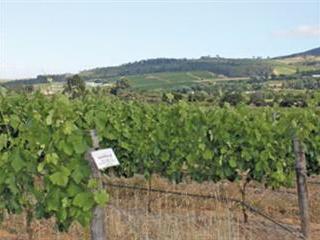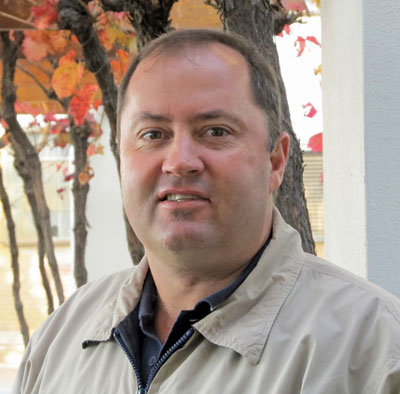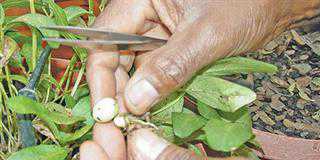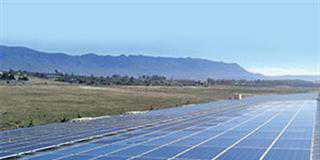
Many primary wine grape producers are currently under severe financial pressure, trapped in a cost-price squeeze as income fails to keep pace with significant increases in expenses. While average net farm income (NFI) was projected at R17 200/ha in 2011, the actual figure fell far short of expectations, dropping to R5 360/ha, according to the VinPro/Winetech production plan survey, an annual financial analysis of primary wine grape producers in the South African wine industry.
In some instances, income was below the cost of production. Yet despite these poor industry averages, top performers are still performing fairly well: they are farming efficiently and opening new markets. In the 2011 production year, the top 50 performers (excluding the Malmesbury region) earned an average gross income of R47 225/ha and an average NFI of
R18 364/ha, compared with the industry average of R35 943/ha and R5 360/ ha respectively.
Keys to success
“What are they doing differently to the rest?,” asks Gert van Wyk, VinPro agro-economist. “We identified a few possibilities during study group sessions held with these growers. “The first factor is diversification into other enterprises, such as stone fruit and core fruit.” In many instances, diversifying helps farmers to optimise their labour and reduces downtime of capital structure and loose assets, such as sheds, tractors and implements.

Gert Van Wyk
“Many crops have different ‘timetables’ to grapes,” explains Van Wyk. “This means that farmers can utilise labour and infrastructure more productively throughout the year and thus spread their capital investment more effectively over a 12-month period. Diversification also reduces risks and improves cash flow.” Another key to success is the phasing out of non-profitable blocks. This goes hand-in-hand with diligent record keeping and calculations.
“Record keeping is critical in these farming units. Top farmers know the exact production costs and yields of each block, as well as the costs of fertiliser and pesticide application, irrigation and labour for activities such as pruning and harvesting. These records form the basis of calculations of gross and net profit.” Based on these sums, non-profitable blocks are phased out or uprooted before they produce at a loss.
“If the calculations indicate that a block is unable to settle annual cash expenditure for two or three years, it should be uprooted. Otherwise that block becomes subsidised by the more profitable blocks,” says Van Wyk. While many farmers do not have the margins to replant unprofitable blocks, the top farmers do not shy away from this expense.
“These producers have sufficient profit margins to implement capital maintenance when required. This is not only about replacing ageing or unprofitable vineyards but also replacing, item by item, capital items such as tractors, vehicles, implements and certain parts of fixed improvements,” he says.
Financial gains
Top performers’ average annual cash expenditure of R20 537/ha for the 2011 harvest was 9% lower than the industry average (R22 443/ha), while their provision for replacement of vineyards, loose assets and infrastructure was 2% higher than the industry average, at R8 324/ha compared with R8 140/ha. The average total annual production cost of the top performers was therefore 6% lower than the industry average, at R28 860/ha compared with R30 582/ha.
“The higher NFI of the top farmers can be ascribed to considerably higher yields – 20,11t/ha compared with the industry average of 15,08t/ha for the 2011 harvest. However, the average price of R2 348/t realised by top performers was lower than the industry average of R2 383/t,” says Van Wyk.
Other strategies
Top producers are also innovative about investing in alternative trellis systems, irrigation systems and new technology.
Another strategy is to conduct short-term farming practices according to specific price points of the crop. “Decisions are based on economic principles. These farmers know how to align production and yields with specific price points. Short-term practices vary depending on various price points – different pruning methods may be required as well as different programmes for irrigation, fertilisation, pest and weed control.

Diversifying into crops such as peaches and apricots allows wine producers to make optimum use of equipment and labour, as these crops are irrigated, sprayed and harvested at different times to grapes. Photo by: Denene Erasmus
“Long-term practices, such as soil preparation, choice of trellis and irrigation systems and planting material, are executed meticulously,” says Van Wyk. A further common denominator of the top 50 farms is that the owner plays a big part in the day-to-day management of the farming enterprise.
“Good labour management is critical,” explains Van Wyk. “Labour makes up about 40% of total annual cash expenditure – by far the biggest cost component – so a trained and motivated labour force is crucial. These top farmers have above-average managerial abilities. They train their workers to a high standard and motivate them, perhaps through performance-related bonuses. You can definitely see that their labour is more productive when measured in rands and cents.”
Finally, Van Wyk notes that the top 50 producers planted an average area of 61ha and 72ha to wine grapes during 2010 and 2011 respectively – a smaller area than the study groups’ averages of 79ha and 85ha. “These producers realise it’s a business which has to be managed and not simply a piece of land to be farmed,” he explains.
“If a farmer is producing 1 000t but only 900t of that is profitable, he’ll be better off farming a unit with only 900t. You can’t allow profitable vineyards to subsidise non-profitable ones. Decisions should be based on economic principles.” Van Wyk concludes that the common denominator for success appears to be higher yields without compromising quality or higher prices – or preferably both.
Contact Gert van Wyk on 023 347 1566 or email [email protected]













